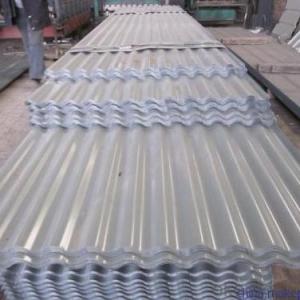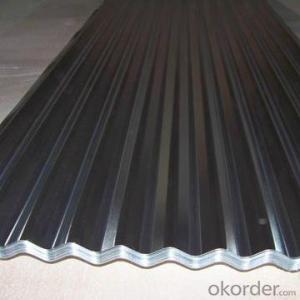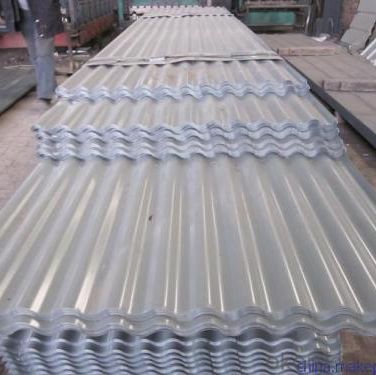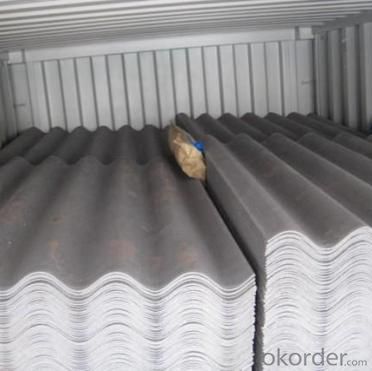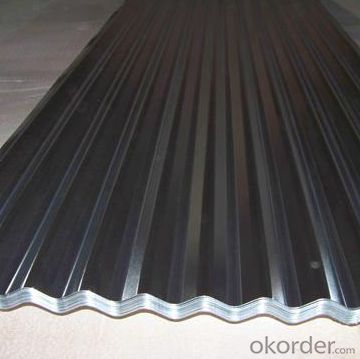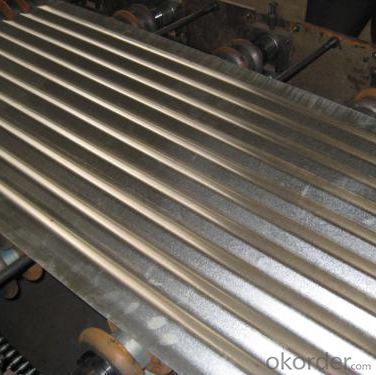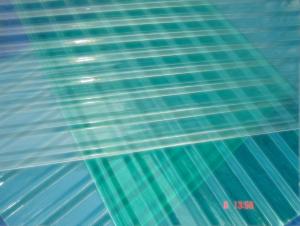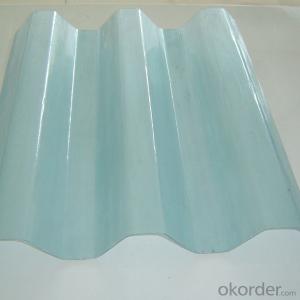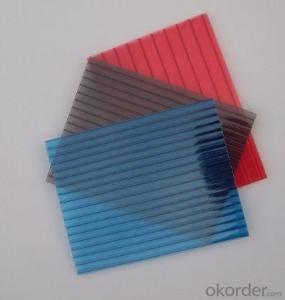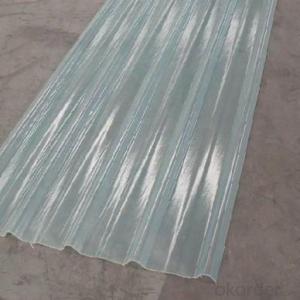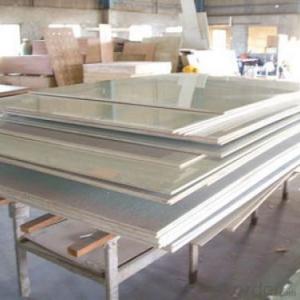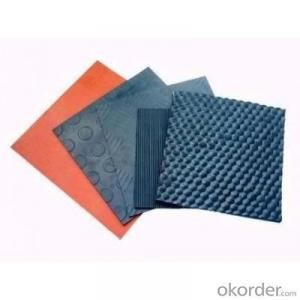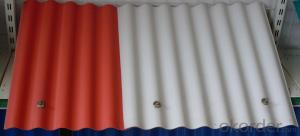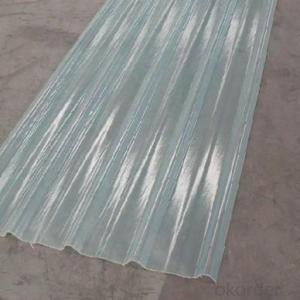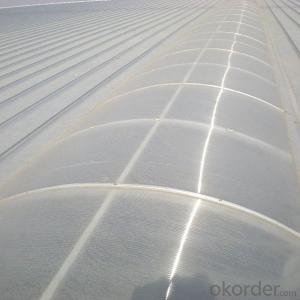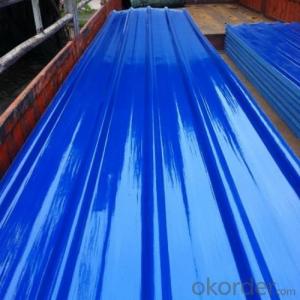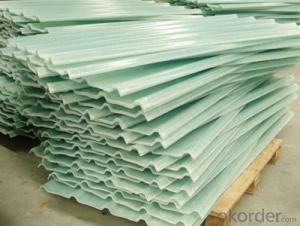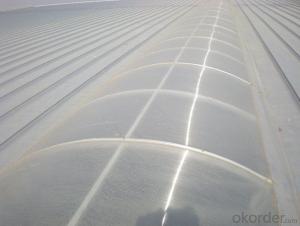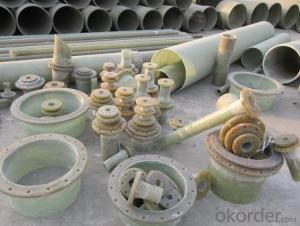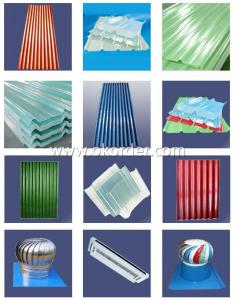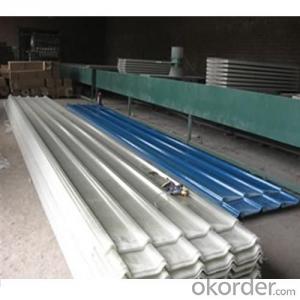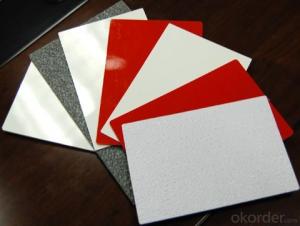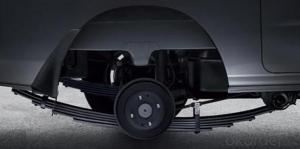FRP Roofing Panel - Fiberglass Roofing Sheet Material Tile
- Loading Port:
- Tianjin
- Payment Terms:
- TT OR LC
- Min Order Qty:
- 300 m
- Supply Capability:
- 40000 m/month
OKorder Service Pledge
OKorder Financial Service
You Might Also Like
Specification
PRODUCT DESCRIPTION
FRP GRP Fiberglass Glassfiber Corrugated Roofing is a patent of our company, not like other FRP products, it is produced without yarn, instead, we use mat only. Therefore, the corrugated sheet is more strong in both horizontal and vertical direction.
Cold rolled sheet has superb sheet shape and surface quality with good flatness and surface finish. The surface of the cold sheet is clean and bright and easy for coating. The varieties of cold rolled sheet are widely used in galvanized substrates, home appliances, tubing, automobiles, building, enamels and other industries.
FEATURES
a. anti-corrosion, non-rusty
b. lightweight and high strength
c. anti-flammable
d. anti-fatigue
e. anti-slippery and safety
f. anti-ageing
g. easy to installation and maintenance
h. excellent electromagnetism property
SPECIFICATIONS
Thickness | Mesh size | Panel size | Open area | Weight |
(MM) | (MM) | (MM) | % | (kg/m2) |
25 | 38*38 | 1220*3660 | 68 | 12.5 |
1220*4076 | ||||
1220*4000 | ||||
30 | 38*38 | 1220*3660 | 68 | 14.75 |
1220*4000 | ||||
38 | 38*38 | 1007*4047 | 68 | 19.5 |
1220*3660 | ||||
1220*4000 | ||||
50.7 | 50.7*50.7 | 1220*3660 | 71 | 23.5 |
1220*4000 | ||||
30 | 19*19 | 1007*4007 | 40 | 18.1 |
38 | 19*19 | 1007*4007 | 40 | 23.5 |
PICTURES

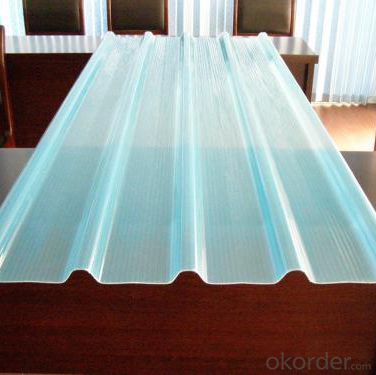
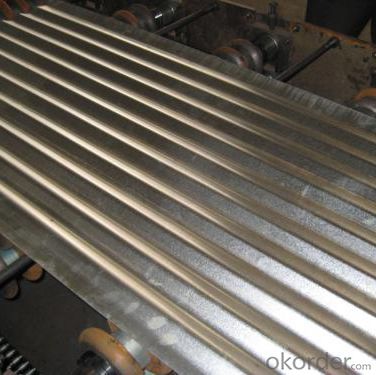
- Q: Can FRP roofing panels be used for both residential and commercial green walls?
- Yes, FRP roofing panels can be used for both residential and commercial green walls. The durable and lightweight nature of FRP panels makes them suitable for vertical gardens and green walls in various settings. Their resistance to moisture, UV rays, and chemicals ensures long-lasting performance in both residential and commercial applications.
- Q: Can FRP roofing panels be painted or coated?
- Yes, FRP roofing panels can be painted or coated. However, it is important to use a paint or coating specifically designed for FRP surfaces to ensure proper adhesion and durability. Additionally, it is recommended to consult with the manufacturer or a professional to determine the best painting or coating method for FRP roofing panels.
- Q: Are FRP roofing panels fire resistant?
- FRP roofing panels, commonly known as Fiberglass Reinforced Plastic, possess fire-resistant properties. The fiberglass material utilized in these panels exhibits a remarkable resistance to fire, rendering them suitable for installation in areas prioritizing fire safety. These panels have undergone rigorous testing and certification to ensure compliance with specific fire safety standards, such as the ASTM E84 Class A fire rating. Consequently, their flame spread is minimal, and they do not significantly contribute to the propagation or expansion of fire. Furthermore, FRP roofing panels frequently find application in industrial and commercial structures where fire resistance is a mandatory requirement. Nevertheless, it is crucial to acknowledge that although FRP panels are fire-resistant, they are not entirely fireproof. Therefore, in the unfortunate event of a fire, it remains imperative to diligently adhere to proper fire safety protocols.
- Q: Can FRP roofing panels be used in agricultural buildings?
- Yes, FRP (Fiberglass Reinforced Plastic) roofing panels can be used in agricultural buildings. FRP panels are known for their durability, strength, and resistance to various weather conditions, making them suitable for use in agricultural environments. These panels provide excellent protection against UV rays, corrosion, and chemicals, making them ideal for agricultural buildings where exposure to these elements is common. Additionally, FRP roofing panels are lightweight, easy to install, and require minimal maintenance, making them a cost-effective choice for farmers and agricultural businesses. Overall, FRP roofing panels are a reliable option for agricultural buildings due to their durability, weather resistance, and low maintenance requirements.
- Q: Can FRP roofing panels be used in museums or cultural institutions?
- Yes, FRP (Fiberglass Reinforced Plastic) roofing panels can be used in museums or cultural institutions. FRP panels are known for their durability, strength, and resistance to corrosion, making them an excellent choice for such environments. Museums and cultural institutions often require roofing materials that can withstand various weather conditions, including extreme temperatures, UV exposure, and moisture. FRP roofing panels are lightweight, which makes them easier to install and handle compared to other roofing materials. This can be beneficial in cases where there are specific architectural requirements or limitations. Additionally, FRP panels can be manufactured in various colors and finishes, offering design flexibility to match the aesthetic of the museum or cultural institution. One important consideration when using FRP roofing panels in museums or cultural institutions is the potential for light transmission. Some FRP panels are designed to allow natural light to pass through, which can positively impact the display of artwork or artifacts. However, it is crucial to ensure that the light transmission properties of the panels do not negatively affect the conservation or preservation of sensitive items. In conclusion, FRP roofing panels can be a suitable choice for museums or cultural institutions due to their durability, resistance to corrosion, and design flexibility. However, it is essential to consider the specific needs of the institution, such as light transmission requirements, before selecting the appropriate FRP panels for the project.
- Q: Are FRP roofing panels suitable for coastal areas with saltwater exposure?
- Yes, FRP (Fiberglass Reinforced Plastic) roofing panels are suitable for coastal areas with saltwater exposure. FRP panels are known for their excellent corrosion resistance, making them an ideal choice for environments where saltwater exposure is common. The fiberglass composition of FRP panels provides superior protection against the corrosive effects of saltwater compared to other roofing materials such as metal or traditional asphalt shingles. Additionally, FRP panels are lightweight, durable, and have a long lifespan, making them a cost-effective solution for coastal areas. Overall, FRP roofing panels are highly suitable for coastal areas with saltwater exposure due to their corrosion resistance and durability.
- Q: Can FRP roofing panels be used for both sloped and flat roofs?
- Yes, FRP (Fiberglass Reinforced Plastic) roofing panels can be used for both sloped and flat roofs. FRP panels are versatile and can be installed on various roof types and pitches. They are lightweight, durable, and resistant to corrosion, making them suitable for a range of applications. Whether it is a sloped roof with a higher pitch or a flat roof, FRP panels can be easily adapted and installed to provide reliable protection and longevity. However, it is important to ensure that the appropriate installation techniques and proper support structures are in place to accommodate the specific roof design and load requirements. Consulting with a professional roofing contractor or manufacturer's guidelines is recommended to ensure the correct installation and performance of FRP roofing panels.
- Q: Are FRP roofing panels resistant to tree damage?
- Yes, FRP roofing panels are generally resistant to tree damage as they are designed to be durable and withstand various external factors. However, the extent of resistance may vary depending on the size and force of the tree's impact.
- Q: Are FRP roofing panels resistant to pests and insects?
- Yes, FRP (Fiberglass Reinforced Plastic) roofing panels are generally resistant to pests and insects. The composition of FRP panels, which consists of a strong fiberglass matrix, makes them less attractive to pests and insects. Additionally, FRP panels are typically installed in a way that minimizes any potential entry points for pests, further reducing the risk of infestation. However, it is important to note that no roofing material is entirely immune to pests, and regular inspections and maintenance are still recommended to prevent any potential issues.
- Q: Can FRP roofing panels be used for skylights in airports?
- Yes, FRP (Fiberglass Reinforced Plastic) roofing panels can be used for skylights in airports. FRP panels are known for their durability, strength, and resistance to various weather conditions, making them suitable for applications in high-traffic areas like airports. Skylights provide natural light and can enhance the aesthetics of an airport while reducing the need for artificial lighting during the day. FRP panels are lightweight, which makes them easier to install and maintain compared to traditional glass panels. Additionally, FRP panels have excellent light transmission properties, allowing ample natural light to enter the airport terminal, which can contribute to a more pleasant and welcoming environment for passengers.
Send your message to us
FRP Roofing Panel - Fiberglass Roofing Sheet Material Tile
- Loading Port:
- Tianjin
- Payment Terms:
- TT OR LC
- Min Order Qty:
- 300 m
- Supply Capability:
- 40000 m/month
OKorder Service Pledge
OKorder Financial Service
Similar products
Hot products
Hot Searches
Related keywords

